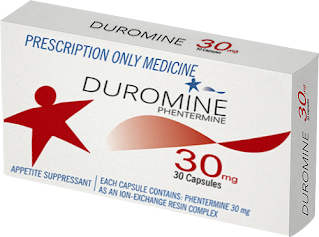Nembutal Injection 50mg/ml
What is Nembutal Injection 50mg/ml
Nembutal Injection 50mg/ml is a barbiturate that acts as a depressant, or sedative, used short-term to treat insomnia. Nembutal is also used as an emergency treatment for seizures, and to cause patients to fall asleep for surgery. Nembutal is available in generic form.
What are side effects of Nembutal Injection 50mg/ml
Common side effects of Nembutal Injection include:
- problems with memory or concentration,
- excitement,
- irritability,
- aggression (especially in children or older adults),
- confusion,
- loss of balance or coordination,
- nightmares,
- nausea,
- vomiting,
- constipation,
- headache,
- drowsiness,
- “hangover” effect (drowsiness the day after a dose),
- agitation,
- nervousness,
- insomnia,
- anxiety,
- dizziness,
- low blood pressure,
- injection site reactions, or
- skin rash.
Seek medical attention immediately if you suffer from any serious side effects of Nembutal Injection such as:
- hallucinations,
- weak or shallow breathing,
- slow heart rate,
- weak pulse, or
- feeling like you might pass out.
NEMBUTAL INJECTION DESCRIPTION
The barbiturates are nonselective central nervous system depressants which are primarily used as sedative hypnotics and also anticonvulsants in subhypnotic doses. The barbiturates and their sodium salts are subject to control under the Federal Controlled Substances Act.
The sodium salts of amobarbital, pentobarbital, phenobarbital, and secobarbital are available as sterile parenteral solutions.
Barbiturates are substituted pyrimidine derivatives in which the basic structure common to these drugs is barbituric acid, a substance which has no central nervous system (CNS) activity. CNS activity is obtained by substituting alkyl, alkenyl, or aryl groups on the pyrimidine ring.
Nembutal Injection 50mg/ml Sodium Solution (pentobarbital sodium injection) is a sterile solution for intravenous or intramuscular injection. Each mL contains pentobarbital sodium 50 mg, in a vehicle of propylene glycol, 40%, alcohol, 10% and water for injection, to volume. The pH is adjusted to approximately 9.5 with hydrochloric acid and/or sodium hydroxide.
Nembutal (pentobarbital) Sodium is a short-acting barbiturate, chemically designated as sodium 5-ethyl-5-(1-methylbutyl) barbiturate.
The sodium salt occurs as a white, slightly bitter powder which is freely soluble in water and alcohol but practically insoluble in benzene and ether.
Nembutal Injection 50mg/ml Indications
- Sedatives.
- Hypnotics, for the short-term treatment of insomnia, since they appear to lose their effectiveness for sleep induction and sleep maintenance after 2 weeks.
- Preanesthetics.
- Anticonvulsant, in anesthetic doses, in the emergency control of certain acute convulsive episodes, e.g., those associated with status epilepticus, cholera, eclampsia, meningitis, tetanus, and toxic reactions to strychnine or local anesthetics.
HOW NEMBUTAL INJECTION IS SUPPLIED
Nembutal Sodium Solution Injection (pentobarbital sodium injection, USP) is available in the following sizes:
20-mL multiple-dose vial, 1 g per vial and 50ml multiple-dose vial, 2.5 g per vial
Each mL contains:
Pentobarbital Sodium, derivative of barbituric acid – 50 mg
Propylene glycol – 40% v/v
Alcohol – 10%
Water for Injection – qs
(pH adjusted to approximately 9.5 with hydrochloric acid and/or sodium hydroxide.)
Vial stoppers are latex free.
Exposure of pharmaceutical products to heat should be minimized. Avoid excessive heat. Protect from freezing. It is recommended that the product be stored at 20° to 25°C (68° to 77°F), however, brief excursions are permitted between 15° to 30°C (59° to 86°F). See USP controlled room temperature.
SIDE EFFECTS OF NEMBUTAL INJECTION
The following adverse reactions and their incidence were compiled from surveillance of thousands of hospitalized patients. Because such patients may be less aware of certain of the milder adverse effects of barbiturates, the incidence of these reactions may be somewhat higher in fully ambulatory patients.
More than 1 in 100 patients. The most common adverse reaction estimated to occur at a rate of 1 to 3 patients per 100 is: Nervous System: Somnolence.
Less than 1 in 100 patients. Adverse reactions estimated to occur at a rate of less than 1 in 100 patients listed below, grouped by organ system, and by decreasing order of occurrence are:
Nervous system: Agitation, confusion, hyperkinesia, ataxia, CNS depression, nightmares, nervousness, psychiatric disturbance, hallucinations, insomnia, anxiety, dizziness, thinking abnormality.
Respiratory system: Hypoventilation, apnea.
Cardiovascular system: Bradycardia, hypotension, syncope.
Digestive system: Nausea, vomiting, constipation.
Other reported reactions: Headache, injection site reactions, hypersensitivity reactions (angioedema, skin rashes, exfoliative dermatitis), fever, liver damage, megaloblastic anemia following chronic phenobarbital use.




Comments
Post a Comment